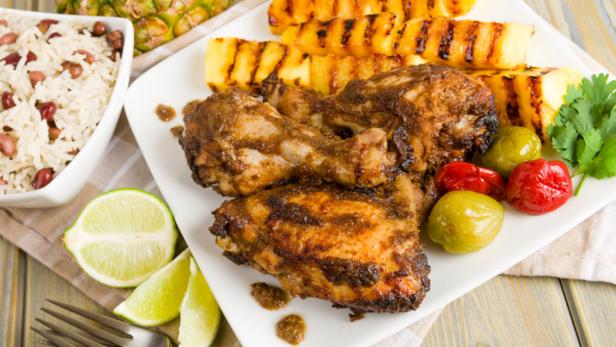Introduction: Tracing the Roots of Jamaican Cuisine
Jamaican cuisine is a vibrant amalgamation of various cultural influences that have converged over centuries. It is an exciting blend of African, European, and indigenous Caribbean flavors that reflect the country’s rich history. However, the cultural mix of Jamaican cuisine doesn’t just stop there. In recent years, scholars and food enthusiasts have discovered the presence of Indian and Chinese influences in traditional Jamaican dishes.
Indian Influences in Jamaican Cuisine: A Brief Overview
The Indian influence in Jamaican cuisine dates back to the 1800s when thousands of Indian laborers were brought to the island to work on British-owned sugarcane plantations. These workers brought with them their culinary traditions, including the use of aromatic spices and herbs like curry, cumin, and turmeric. Over time, these ingredients became part of the Jamaican culinary landscape, and today, many Jamaican dishes feature Indian-inspired spices and seasoning.
Curried goat is perhaps the most famous dish in Jamaican cuisine that is influenced by Indian cooking. It is made by marinating goat meat in a blend of Indian spices and then slow-cooked until tender. Other Jamaican dishes that showcase Indian flavors include roti, a flatbread filled with curried vegetables, and ackee and saltfish, a breakfast dish made with the national fruit of Jamaica, ackee, and salted codfish, flavored with Indian spices.
The Arrival of Chinese Influence in Jamaican Cuisine
The Chinese influence in Jamaican cuisine is a more recent development, dating back to the early 1900s when Chinese immigrants arrived on the island. These immigrants brought with them a diverse culinary tradition that included stir-frying, steaming, and dumpling-making techniques. Jamaicans soon adopted these cooking methods and infused them with local ingredients to create unique dishes that reflect both cultures.
One of the most iconic Jamaican-Chinese dishes is jerk chicken fried rice, which combines Jamaican jerk seasoning with Chinese fried rice. Another popular Jamaican-Chinese fusion dish is chow mein, which features Chinese-style stir-fried noodles combined with Jamaican ingredients like callaloo, a leafy green vegetable, and scotch bonnet peppers.
Jamaican-Chinese Fusion: A Match Made in Culinary Heaven
The fusion of Jamaican and Chinese flavors has resulted in a culinary match made in heaven. Jamaican-Chinese dishes are often characterized by bold flavors, contrasting textures, and vibrant colors. The use of Jamaican spices like allspice, thyme, and scotch bonnet peppers adds a unique twist to traditional Chinese dishes, resulting in a truly unique culinary experience.
Jamaican-Chinese fusion dishes are popular not only in Jamaica but also worldwide. They have become a staple in many Jamaican restaurants and food trucks across the globe, reflecting the growing popularity of this culinary phenomenon.
The Impact of Indian and Chinese Influences on Modern Jamaican Cuisine
The Indian and Chinese influences on Jamaican cuisine have had a significant impact on modern Jamaican cooking. Many Jamaican chefs have embraced these culinary traditions and added their own creative twist to create new and exciting dishes. The use of Indian and Chinese ingredients and cooking techniques has also inspired the development of new Jamaican dishes that showcase the country’s cultural diversity.
Today, Jamaican cuisine is more diverse than ever, with a wide range of dishes that reflect the country’s rich cultural heritage. The fusion of Indian, Chinese, African, and European influences has resulted in a culinary landscape that is exciting, vibrant, and constantly evolving.
Conclusion: Celebrating the Diverse Flavors of Jamaican Cuisine
In conclusion, the Indian and Chinese influences on Jamaican cuisine have played a significant role in shaping the country’s culinary landscape. They have added a unique twist to traditional Jamaican dishes and inspired the development of new fusion dishes that showcase the country’s cultural diversity.
Jamaican cuisine is a celebration of the country’s rich history and cultural heritage. It highlights the importance of cultural exchange and the power of food to bring people together. As the world becomes more interconnected, it is essential to celebrate and embrace the diverse flavors and culinary traditions that make up our global community.

